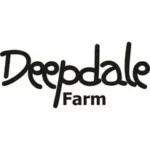Kevin the Harris Hawk
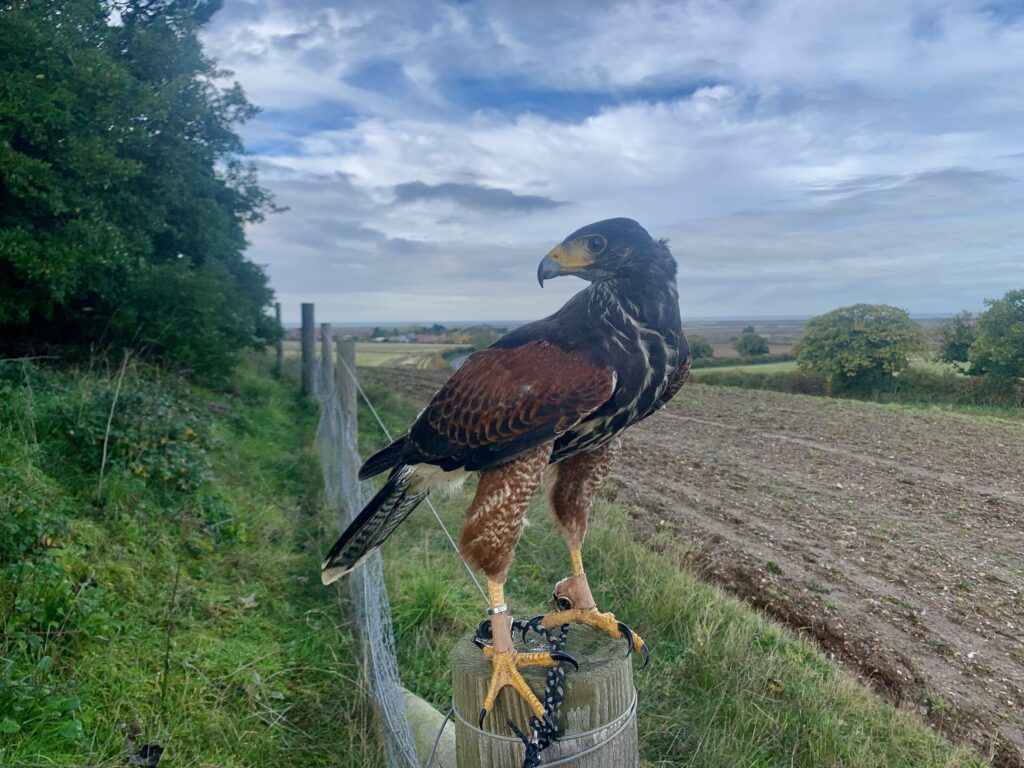
This is Kevin, she is a female Harris hawk (more on the name later) and I’m Mark the falconer. I’ve been practicing falconry for nearly 30 years and even made a living from it in the 90’s flying falcons to keep airports safe. Two traditional terms are used to describe a person involved in falconry: a “falconer” flies a falcon; an “austringer” (French origin) flies a hawk so officially I am currently an Austringer but we tend to use the general term falconer.
Kevin is a Harris’s hawk (Parabuteo unicinctus), which is a medium-large bird of prey that breeds from the southwestern United States, south to Chile, central Argentina, and Brazil. The Harris’s hawk is remarkably popular in falconry because of its temperament, ability and adaptability to falconry. Kevin is a she but for a long time it was thought she was a he. This is a result of the method of captive breeding, which sees the chicks raised by their parents in a seclusion aviary for four months with the breeder only able to check progress through a small hole. First views suggested Kevin was a boy but as things progressed it was clear ‘he’ was ‘she’, but by then the name had been chosen by my daughter, and it’s stuck.
Falconry is the traditional art and practice of training and flying birds of prey. It has been practised for over 4,000 years. The practice in early and medieval periods of history is documented in many parts of the world. Originally a means of obtaining food, falconry has acquired other values over time and has been integrated into communities as a social and recreational practice and as a way of connecting with nature. Falconry is now inscribed on the UNESCO representative list of intangible cultural heritage of humanity.
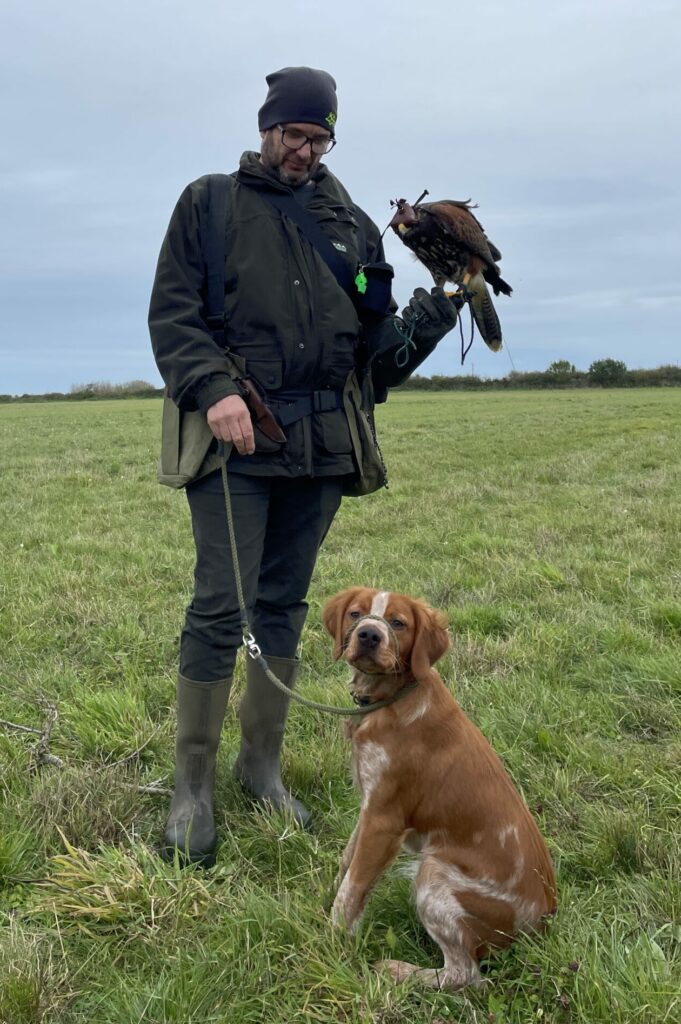
Returning to falconry after a break of a few years I needed to acquire permission to train my birds again. Many letters were sent far and wide and the team at Deepdale asked me to come along for a chat. This was all taking place whilst Kevin was yet to become an egg. I was looking for land to train my birds to be able to fly free and build up fitness before moving to other land for rabbit control and hunting. Deepdale turned out to be perfect and having all got along it was agreed I could train there when I secured a bird. Chick updates were often shared as Kevin progressed. The day came, Kevin was collected and fitted with her furniture.
We attach the ‘furniture’ – anklets and jesses (leather straps) to allow us some control of those deadly feet. When she is flying, we remove the jesses to avoid any risk of them getting tangled or stuck in trees. When not flying, Kevin is tethered to perches designed to mimic natural behaviours (bow perches to represent branches for hawks – blocks which are flat topped for ledges on cliffs for the falcons). The birds have no desire to fly unless hungry as they are by nature lazy and only fly to feed. Bells are used to help us locate the bird. We mix ankle and tail mounted bells, as in Kevin’s case the breed likes to waggle the tail but doesn’t move the feet much. The bell is almost redundant with the radio/gps trackers we use but for a ‘feel’ of what she is up to when moving through a wood the bells are still very useful.
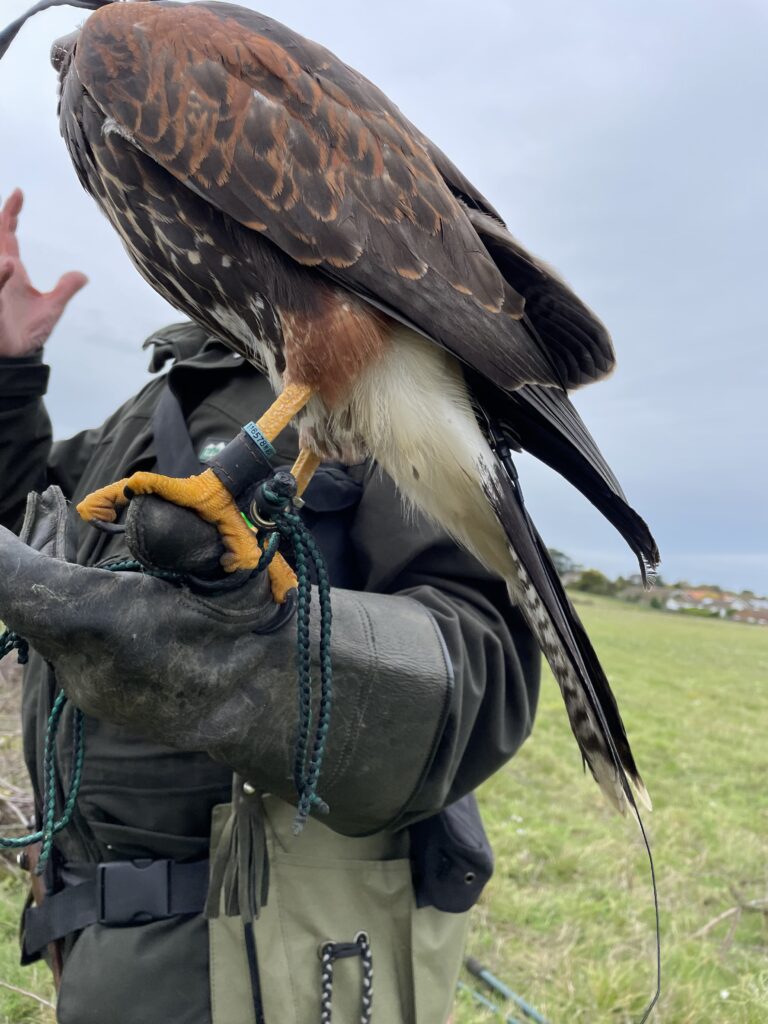
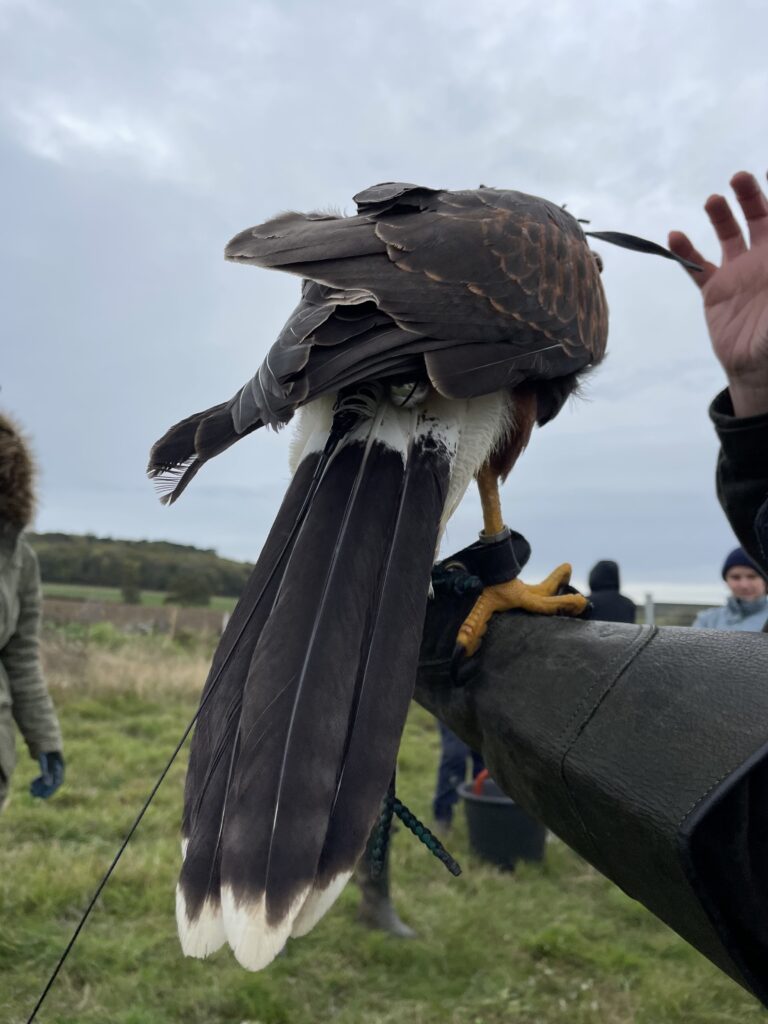
We then began to introduce Kevin to the wider world, the manning process (acclimatising to humans and the human world). Hoods are used to prevent the bird becoming stressed in situations that might frighten it, especially during training, when a young hawk can still be untrusting of humans. We then start to increase the distances the bird will come to us using rewards until we reach the scary day where we look to fly free. We fit a tracker so should the worst happen, we can locate and recover the bird. I use radio trackers, but many falconers are now moving to GPS trackers which can show you to within a few paces exactly where your bird is resting on a map. I’m happy to say we have passed the day successfully and Kevin is flying free and building up her fitness and knowledge of the wind and the big wild world.

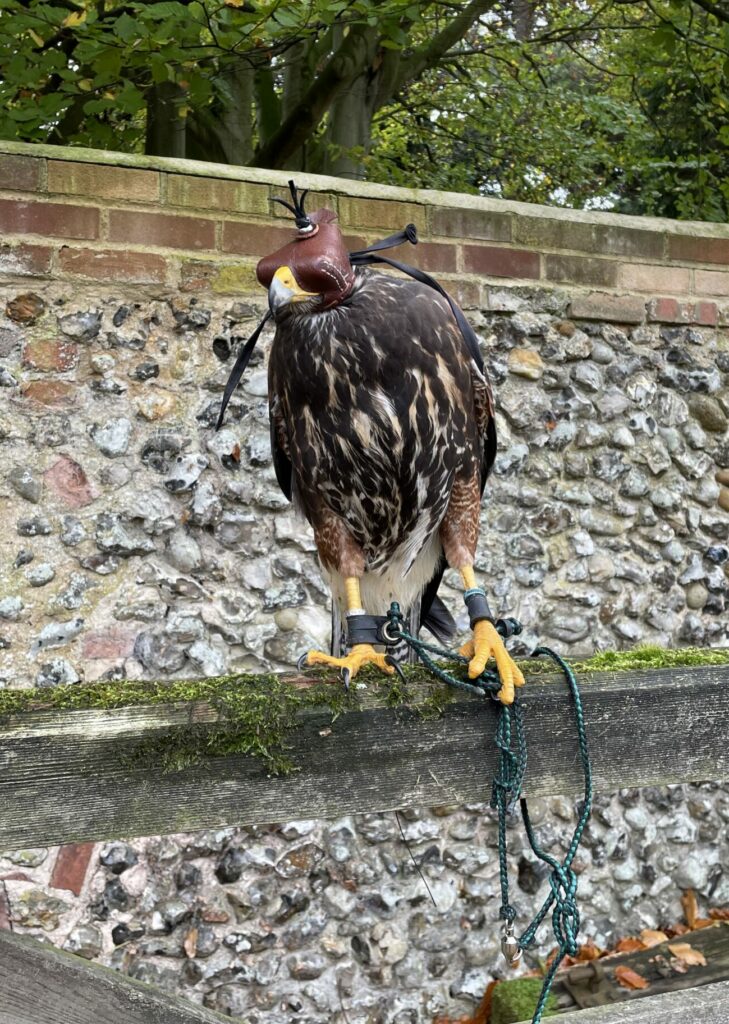
Things are in flux as I write due to Avian Influenza which is a national problem and means all captive birds are to be kept indoors. Currently for welfare reasons we are still able to fly our birds but under strict regulations. It is a very concerning time for birds both captive and wild and we are doing everything we can to ensure the safety of all concerned.

